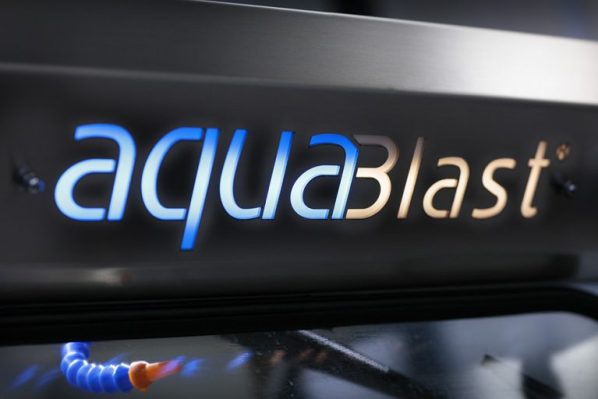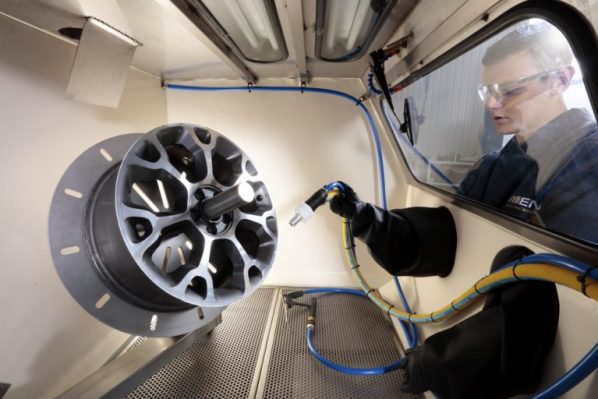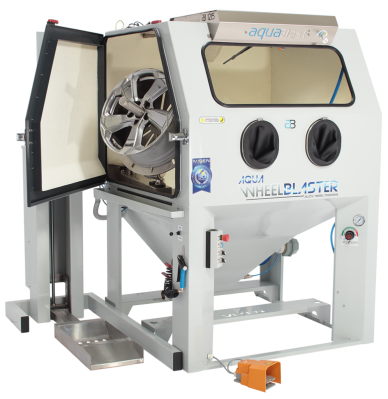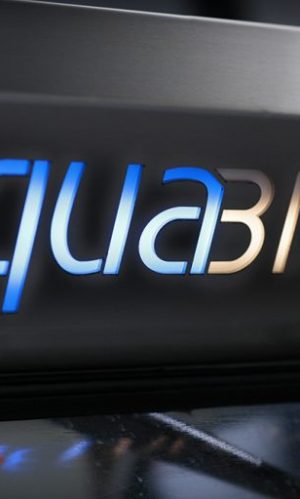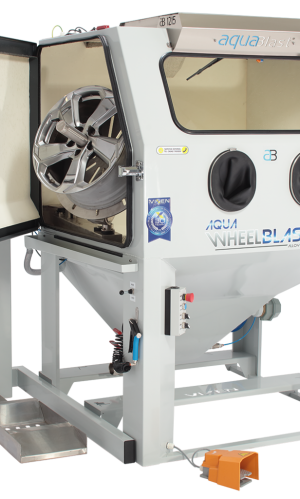Aqua Wheelblaster
Aqua Wheelblaster
Vixen has designed a revolutionary new wetblasting machine specifically for SMART alloy wheel repairs – The Aqua Wheelblaster.
The Aqua Wheelblaster uses Vixen’s Aquablast wet blasting technology to finish and provide a key for alloy wheels, specifically after kerb repairs. The process uses an abrasive mixed with water into the slurry to blast off the alloy and provide an ideal surface for the paint and/or lacquer to adhere to in the next stage of the restoration process.
Firstly, the wheel is loaded onto the pneumatic lift* (optional) which is raised up to the opening of the cabinet, which is ideal for operators who would like to blast larger wheels.
The operator then loads the wheel onto the internal spigot, which is mounted onto a pivoting arm to allow for easy and hassle-free loading and handling during the application.
Once loaded, the operator applies pressure to the foot pedal, and the water/media slurry which is contained in the cabinet sump is delivered to the manual blast nozzle via a glandless polyurethane pump. Compressed air is added at this stage to accelerate the slurry.
After contact with the alloy, the slurry drains back into the cabinet sump to create a re-circulation system, while other contaminants are fed into a sedimentation filter.
As a result, the alloy wheel is left etched, which is a finish usually associated with a 60/80 grade sandpaper, in a fraction of the time.
`
Features
- Dust-free process
- Wheels are etched, not stripped
- Quick process
- One machine does all 6 processes in one cabinet
- No additional washing machines required
Optional extras
- Pneumatic lift
- Internal spigot
Inquire About This Machine

